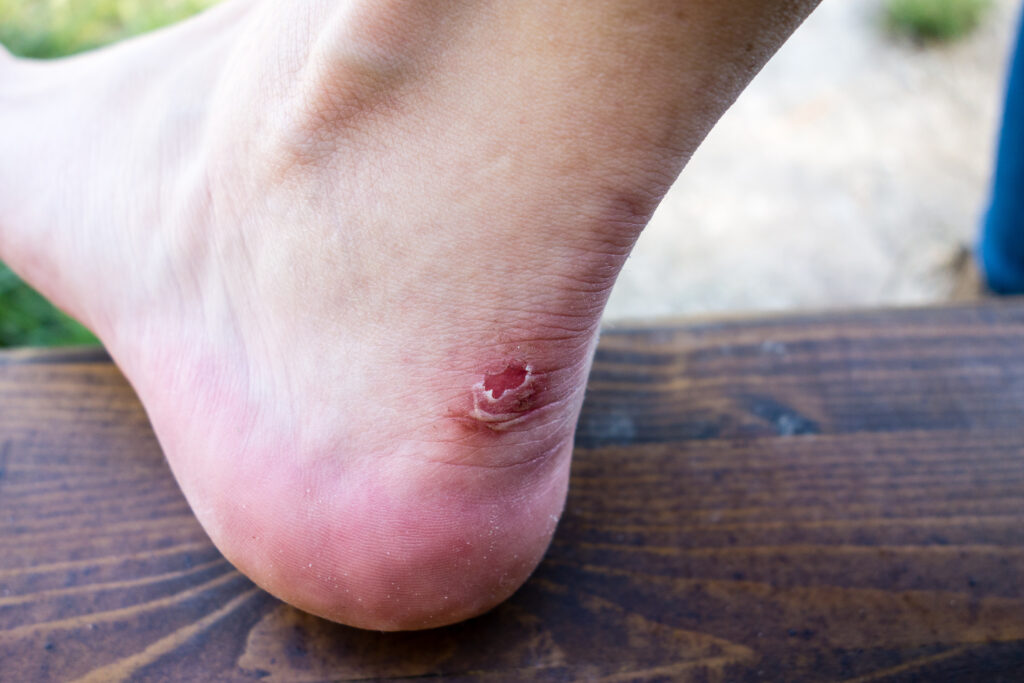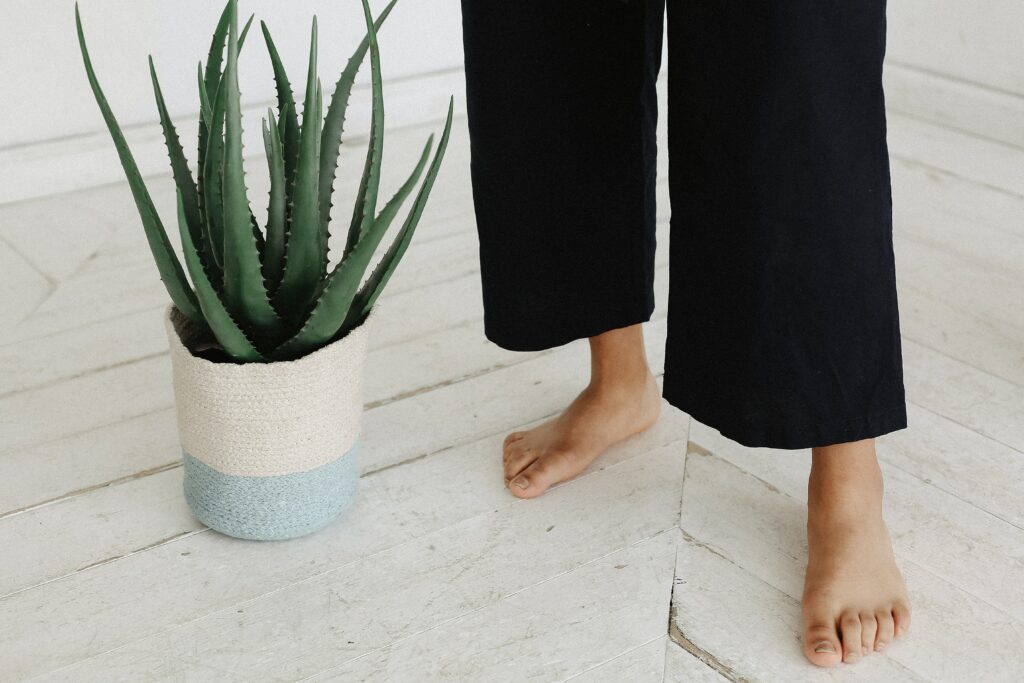Blisters
Blisters happen to everyone at some point, but that doesn’t make them any less troublesome.
Typically occurring on the hands and feet, blisters can be irritating, sore, and sometimes painful.
If you are prone to blisters or you are currently suffering from a particularly painful one, then the below guide is exactly what you need.
Read on to discover:
- What are blisters?
- What are the different types of blisters?
- What are the main causes of blisters?
- What areas of the body are affected by blisters?
- What are the best over-the-counter blister treatments?
- How can I treat a blister at home?
- Are there any home remedies for blisters?
- Do I need to see a doctor about my blisters?
- How to prevent blisters
- Blisters FAQs
What are blisters?
Blisters are bubbles that appear on the skin. They are often filled with pus, blood, or serum, a clear and watery part of blood.
Typically, blisters are circular in shape, and they can appear as a single bubble or in clusters on the skin.
Blisters most commonly appear on the feet and the hands.

What are the different types of blisters?
There are several different types of blisters, with the most common ones being:
Friction blisters
As the name suggests, friction blisters are caused by rubbing on the skin. This results in fluid-filled blisters. Typically, friction blisters occur from wearing ill-fitting shoes, not wearing socks, or by holding heavy items such as garden tools.
Blood blisters
Blood blisters happen when something or someone pinches your skin. Unlike friction blisters that are filled with a clear fluid, blood blisters contain blood.
Heat blisters
Heat blisters are caused by burns or sunburn. These can appear anywhere on the face or body. You can also get blisters from frostbite.
What are the main causes of blisters?
There are several reasons why blisters can occur, some of which can be avoided and others that need to be managed and treated accordingly.
The most common causes of blisters are:
Friction
Friction blisters are one of the most common blisters and can affect the feet and the hands. These are usually caused by new footwear, ill-footing footwear, or too-tight gloves.
Typically, friction blisters occur on the heels, toes, thumbs, or palm of the hands. Although, you can get a friction blister bottom of foot.
Frostbite and burns
Extreme temperatures can cause blisters. For example, if you expose your skin to the sun for too long, you can get sunburn which may result in blisters. You can also get blisters from very cold temperatures or by touching frozen goods.
Contact dermatitis
Contact dermatitis occurs when your skin comes into contact with something that it doesn’t like. This could be a reaction to soap, perfume, detergent, fabric, or a plant such as poison ivy or poison oak.
Atopic dermatitis
Atopic dermatitis is the most common form of eczema that typically displays itself as a rash and may result in blisters filled with fluid.
Dyshidrotic eczema can cause itchy blisters on the palms of the hands and soles of the feet.
Insect bites
Insect bites can sometimes result in itchy blisters. Scabies can leave lines of blisters on the skin. These typically occur on the hands, feet, wrists, and under the arms.
Flea and bed bugs can also cause blisters.
Chickenpox and shingles
Viruses such as chickenpox and shingles cause blisters to appear on the skin. These typically start as red bumps, which then become blisters before finally scabbing over. Chickenpox blisters can be very itchy.
Herpes Simplex
The herpes simplex virus can cause blisters to appear on the lips, mouth, and genitals. These are known as fever blisters.
Herpes simplex can be passed from one person to another through kissing, sex, or sharing utensils.

What areas of the body are affected by blisters?
Blisters are most commonly found on the feet and the hands, but they can also occur on the body and face.
The cause of your blisters will determine where they occur on your body. For example, friction blisters most commonly occur on the hands and feet, whereas blisters caused by a virus often occur on the body.
What are the best over-the-counter blister treatments?
While you do not need to treat blisters as these will heal naturally on their own, if you want to speed up the healing process or reduce discomfort, you can try an over the counter blister treatment.
Some of the most popular OTC blister treatments are:
Antibiotic ointment
If you are looking for a blister on heel of foot treatment or a blister on bottom of foot from walking treatment, then an antibiotic ointment is a good idea. This is particularly true if you have had to pop and drain your blister as they can help to prevent infection.
Antibiotic ointments do not require a prescription and can be bought at most pharmacies and online.
Comfort padding
If you are finding it painful to walk due to blisters on your feet, then comfort padding can help. These can be bought at most pharmacies and supermarkets and are designed to be placed around or under your foot.
Comfort padding can be cut to size and secured in place with tape.
Anti-blister sticks
Anti-blister sticks are used to prevent rubbing on the skin and reduce your risk of blisters.
This treatment is usually invisible on the skin and easy to apply.
Blister plasters
You can buy plasters that are specifically designed to be placed over blisters, allowing you to walk with minimal discomfort. These are particularly effective as an open blister care treatment.
Foot creams
If you suffer from dry skin or have a skin condition such as dermatitis or psoriasis, you are more likely to develop blisters.
To combat dry, flaky, and blister-prone skin, over-the-counter foot creams such as CCS Foot Care Cream can be applied daily to soften the skin on your feet and keep it in optimal condition.
How can I treat blisters at home?
To treat blisters at home, follow the below simple steps:
1. Cover the blister
If you notice a blister has formed on your skin, the first thing you need to do is cover it. Make sure that you use a soft and clean bandage or a blister dressing and then loosely cover the blister with it and secure it in place.
2. Use padding
If you have a blister on the bottom of your foot, you should apply some padding as this can help to reduce discomfort when walking. Place the padding over the blister and then cover with a bandage.
3. Do not pop or drain the blister
Although many people believe that blisters need to be popped and drained to heal, this can lead to the skin becoming infected. However, if you have a very large or painful blister on the bottom of your foot, you may have to pop the blister and drain it to avoid further discomfort. If this is the case, make sure that you use a sterilised needle and rubbing alcohol.
4. Keep the skin clean
Make sure that you keep the affected area clean using warm water. You can also apply petroleum jelly to the blister to help facilitate the healing process.
If you notice any signs of infection, such as redness, pus, or pain, make an appointment with your GP.
Are there any home remedies for blisters?
There are several home remedies for blisters that you can try, although these have not been medically approved as a treatment for blisters.
The most popular home remedies for blisters are:
Aloe vera gel
Aloe vera has anti-inflammatory, antiseptic, and antibacterial properties, making it a good natural remedy for blisters.
You can apply topical aloe vera creams, lotions, or gels, or you can use raw aloe vera gel directly on the affected area.
Vaseline
Vaseline, also known as petroleum jelly, is often used as a natural treatment for wounds.
To use Vaseline for blisters, apply it to the wound and then cover it with a bandage.
Coconut oil
Coconut oil contains lauric acid which is known for its ability to hydrate the skin and reduce inflammation.
To use coconut oil on blisters, dip a cotton ball into the oil and then gently apply it to the affected area.

Do I need to see a doctor about my blisters?
In most cases, you do not need to see your doctor about blisters, as they can either heal on their own or be treated using an over-the-counter remedy.
However, if you experience one or more of the below symptoms alongside your blisters, you should seek medical attention:
- High temperature
- Chills
- Other flu-like symptoms
- Signs of an infection such as pain, redness, or pus
If you have blisters around your eyes or genitals, it can also be a good idea to seek an official diagnosis from your GP.
How to prevent blisters
One of the easiest ways to prevent blisters from occurring is to stop chafing toes and feet. You can do this by:
Protecting your feet
To protect your feet and prevent blisters, you should wear nylon or moisture-wicking socks, which actively reduce sweating. You should also ensure that your footwear fits properly and does not rub your feet.
Use soft bandages
If you often get blisters on your feet, either due to your choice of footwear or because you partake in rigorous physical activities such as hiking, it can be a good idea to place soft bandages around your feet.
Apply a foot powder
Foot powders help absorb moisture which can prevent blisters from occurring on your feet. These can be bought at most supermarkets and pharmacies.
Be vigilant
If you notice that your feet are rubbing or that your skin is turning red, stop what you are doing or remove your footwear before a blister starts to form.
Frequently asked questions
Why do you get blisters?
Blisters are most commonly caused by friction from ill-fitting shoes or not wearing socks. You can also get blisters from sunburn, pinching of the skin, and frostbite. Blisters are a common symptom of chickenpox.
How do you treat blisters?
In most cases, blisters do not require treatment as they will heal naturally on their own in a few days. However, you can use OTC treatments such as blister plasters, blister sticks and foot care creams to facilitate the healing process.
How do I get rid of blisters fast?
To get rid of a blister fast, clean the affected area and then cover it with a bandage or blister plaster. You can also apply a layer of Vaseline to the blister before covering it. If you have a large or very painful blister, you can make it heal faster by popping it with a sterilised needle and then covering it.
Is it best to pop a blister or leave it?
You do not need to pop small blisters as these will heal on their own. If you have a large blister, one that is particularly painful, or your blister is located in a difficult place, such as on the bottom of your foot, then popping it can offer some relief.
Popping a blister can lead to an infection, so always use a sterilised needle and rubbing alcohol and visit your doctor if you notice any signs of infection such as redness, pain, or pus.
Do blisters go away on their own?
In most cases, blisters will go away on their own. You facilitate the healing process by using an over-the-counter foot blister care treatment or heel blister treatment.
How long do blisters take to heal?
Blisters typically heal on their own within 2-3 days. You can speed up the healing process by using a skin blister treatment such as Compeed blister care. If your blister does not appear to be healing or looks like it may be infected, make an appointment with your GP.
No products found